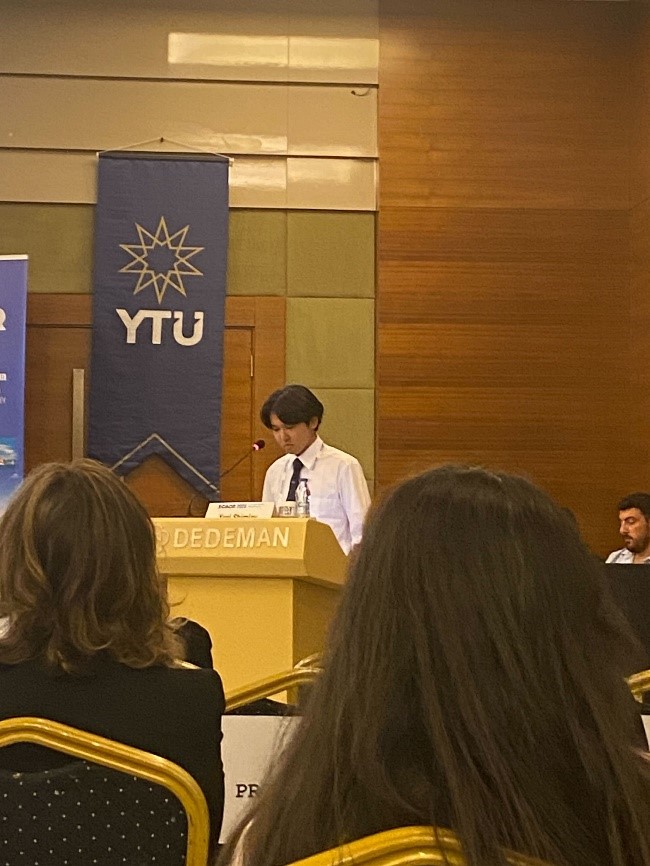2023.09.20
News
4 Students from the Department of Civil Environmental Engineering, under the supervision of Professor Arikawa, Participated in an International Conference
Four students from the Department of Civil Environmental Engineering at Chuo University, under the supervision of Professor Arikawa, participated in an international conference.
The conference, held from September 4th to 6th, was titled the 10th Short Course/Conference on Applied Coastal Research (SCACR2023). SCACR2023 aimed to bring together students, field practitioners, researchers, theorists, and modelers in the field of coastal and harbor engineering. The conference provided information on the latest developments from both scientific and engineering perspectives in coastal, harbor, and ocean engineering. Its primary goal was to facilitate the exchange of ideas with users and stakeholders in coastal regions.
Many young researchers attended the conference, and participating students had the opportunity to gain insights into overseas cases and the latest research findings through presentations and oral discussions. Additionally, this event provided a valuable opportunity to explore a wide range of research topics outside their own fields, which served as a great stimulus for their future research activities.
Here is an overview of the participating students and their research:
[D1] Yota ENOMOTO (Poster Presentation) (Abstract Peer-Reviewed)
Presentation Title: Estimation of Scour Depth Around Cylinder by Flow
Authors: Yota ENOMOTO, Taro ARIKAWA
Summary: Estimating the maximum scour depth around a cylinder due to flow is well-known through Shen et al. (1969) formula. However, this formula considers only the cylinder's diameter and neglects flow velocity and ground conditions. Therefore, this study aimed to propose an estimation formula for maximum scour depth considering flow velocity and ground particle size and conducted experiments under various conditions.
[M2] Masahiro OKUBO (Oral Presentation) (Abstract Peer-Reviewed)
Presentation Title: Numerical Investigation of Wave Forces on Coastal Bridge Decks
Authors: Masahiro OKUBO, Hiroshi OKUBO, Kasahara HIROTSUGU, Naoyuki NAKAMURA, Shigeta SASAKI, Taro ARIKAWA
Summary: High waves generate significant loads on the underside of coastal bridge decks due to impact pressure and air compression. Therefore, it is essential to comprehensively consider wave forces during the design phase. The accuracy of numerical analysis techniques predicting the physical impact of wave forces on coastal bridge decks remains unclear. This study demonstrated the applicability of wave force evaluation in the horizontal plane using 3D fluid analysis to replicate experimental conditions.
[M2] Taiki SEKIGUCHI (Oral Presentation) (Abstract Peer-Reviewed)
Presentation Title: Validation of Wind-blown Sand Calculations in Sand Transport Model
Authors: Taiki SEKIGUCHI, Akiyoshi KATANO, Yota ENOMOTO, Taro ARIKAWA
Summary: This research conducted numerical calculations and model experiments with limited examples concerning wind-blown sand. It validated wind-blown sand calculations using the Sand Transport Model (STM). The study confirmed differences in the amount of wind-blown sand to the leeward side due to coastal deformation caused by waves, and the calculations using the sand transport model closely matched experimental data and wind-blown sand formulas.
[M1] Yuri SHIMIZU (Oral Presentation) (Abstract Peer-Reviewed)
Presentation Title: Stability Performance of Stone Gabions as Armor Units for Mounds of Composite Breakwaters by Irregular Wave Experiments
Authors: Yuri SHIMIZU, Toru AOTA, Shigeru SAKAMOTO, Takeharu KONAMI, Hideto OKIDO, Taro ARIKAWA
Summary: Experimental studies using stone gabions as armor units for mounds of composite breakwaters on the outer side of harbors are limited, and their stability performance as wave-resistant designs remains unclear. This research conducted 1/40 scale irregular wave experiments using stone gabions as armor units. Comparing the results with those using bag-shaped root reinforcement material (Ns), this study confirmed that under the conditions considered, there were no issues with the stability performance of stone gabions as armor units for mounds of composite breakwaters on the outer side of harbors.
For those interested, please visit the following links:
Chuo University, Civil, Human and Environmental Science and Engineering Course:

Yota Enomoto (D1)

Masahiro Okubo (M2)

Taiki Sekiguchi (M2)

Yuri Shimizu (M1)
